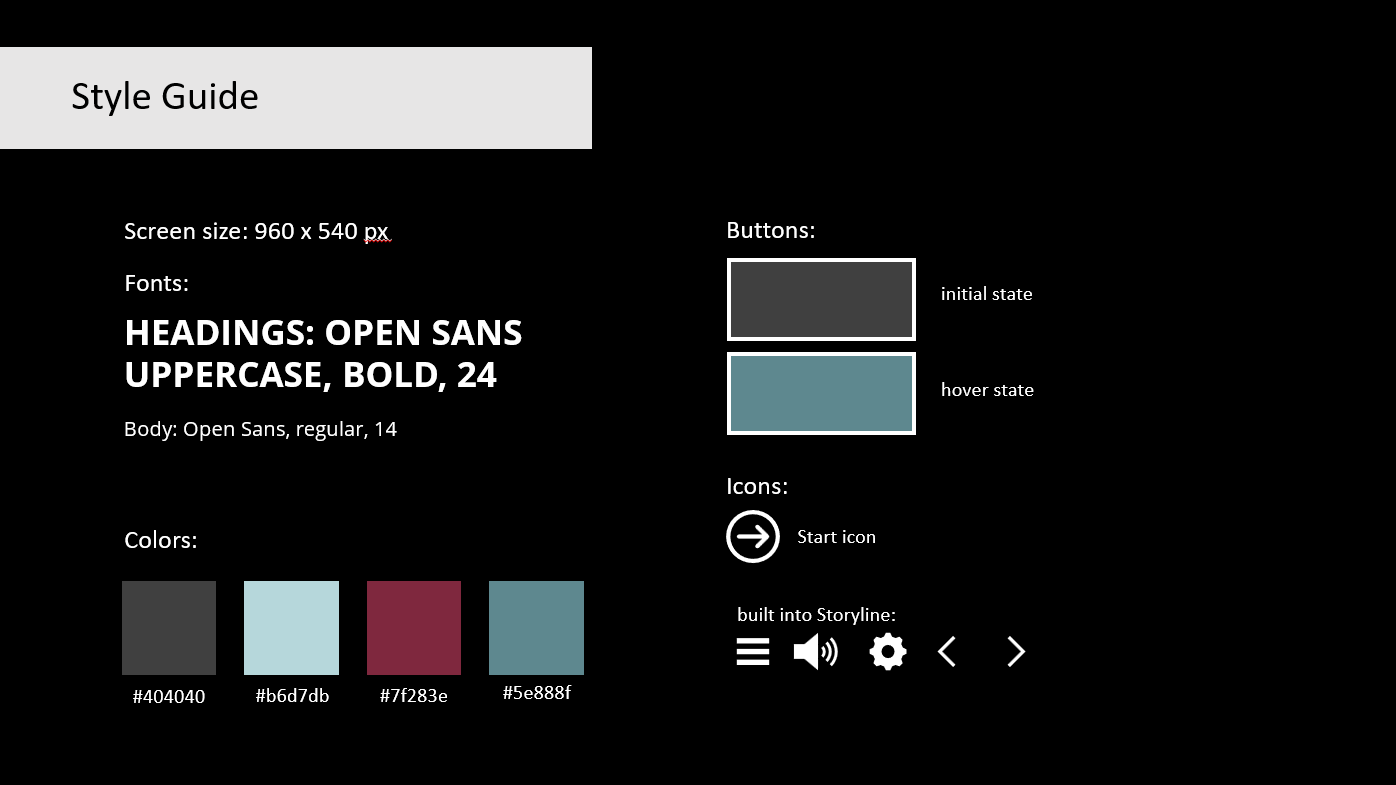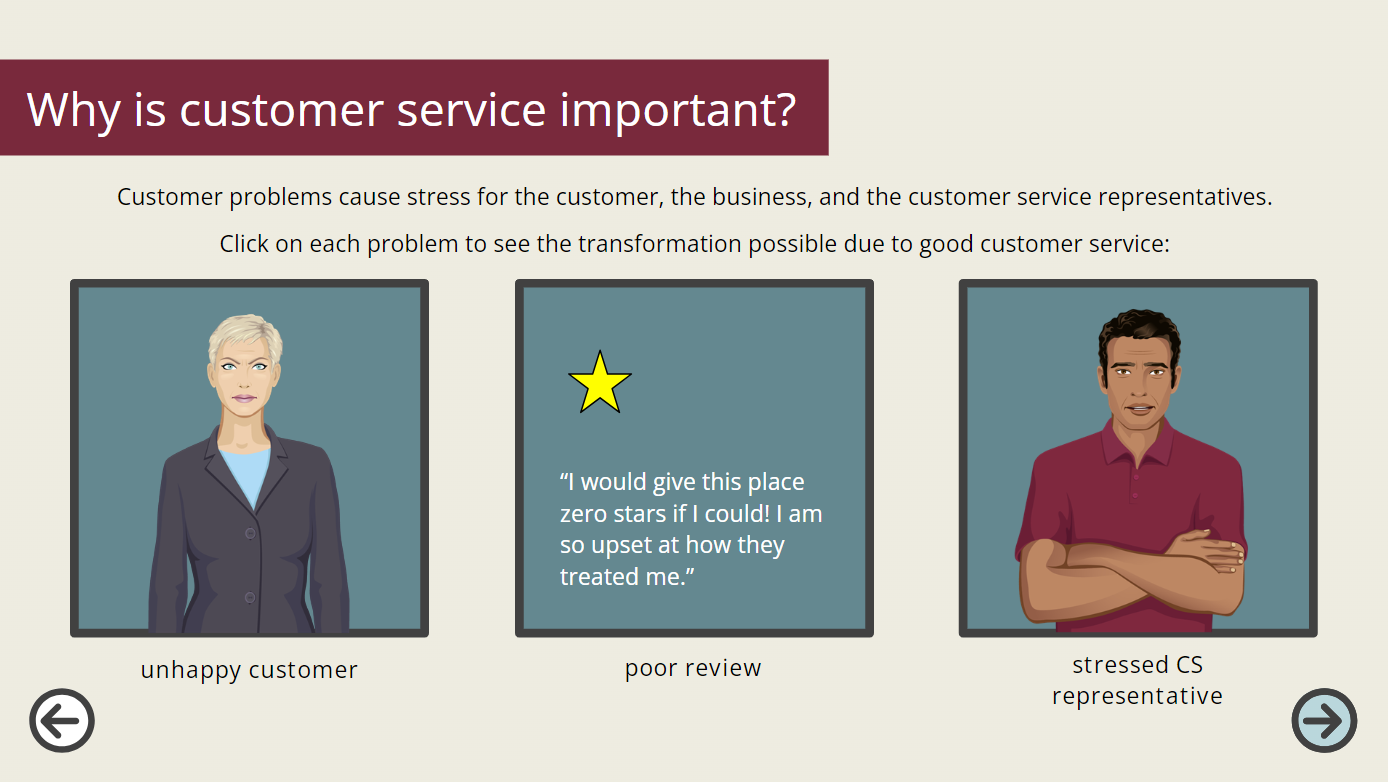Articulate Storyline eLearning Project: Customer Service Training
Business problem:
Customer service agents often struggle with how to handle difficult customers.
Solution:
I designed and developed this training in Articulate Storyline. It includes an overview of the H.E.A.R.T. method for dealing with unhappy customers, as well as a scenario where customer service representatives can practice using the method.
Overview
This was a student project for the MSIDT program at California State University, Fullerton.
I imagined that I had a client looking for a training to help customer service representatives respond to unhappy customers. I assumed that the client would not want the reps off the phone for very long for this training, so it should be short in length. I also wanted to make sure the steps were easy to remember on the job.
Research
I did online research to find a mnemonic that would help customer service representatives remember the appropriate steps in the conversation with unhappy customers. I found many similar acronyms, but decided on the H.E.A.R.T. method because I felt the name implied that the representative would be showing empathy and care toward the customers.
Storyboarding
I then created a storyboard with placeholder images, as well as a style guide for the colors, fonts, icons, and buttons to be used in the project. I also created a flowchart to show the flow of screens the learner would progress through. I used Adobe Photoshop to make small edits to the background image.
Final Project
Screenshots from final project
This project is approximately 5 minutes long.
It does not have audio.
The final project contains:
A title slide
Learning objectives
Why good customer service is important
Introduction to the H.E.A.R.T. method
More information on each step, including what the customer may be feeling
Review of the method
Three scenarios with customer interactions. The learner selects the best response and is given feedback to remind them to follow the H.E.A.R.T. method
A thank you screen with a note letting the learner know that their supervisor will help them practice with real clients.
Results
This was a project for my master’s program, so it was not used in a corporate setting. However, I received positive feedback from my instructor and peers.
I enjoyed developing a project that used scenarios and I believe this type of training is most likely to result in change in the workplace.








